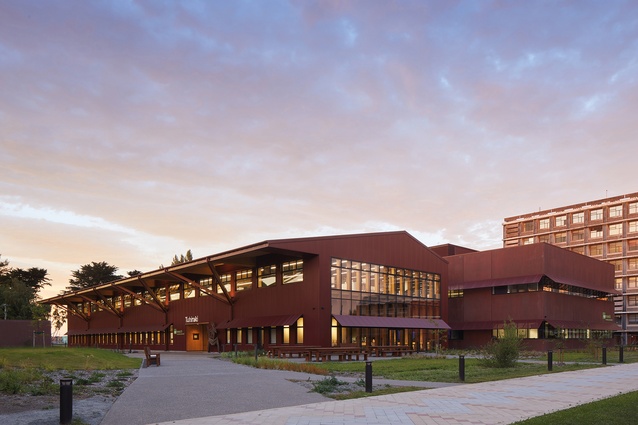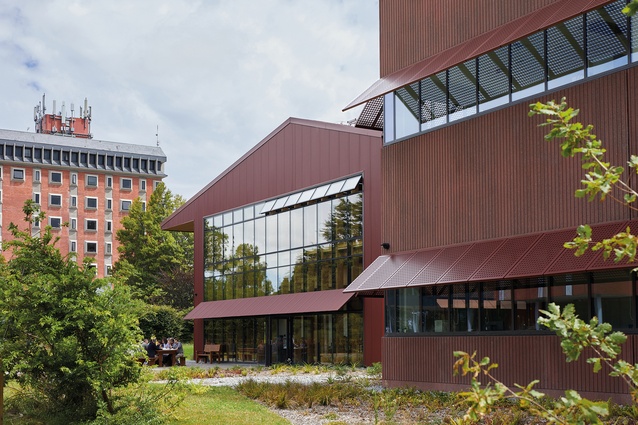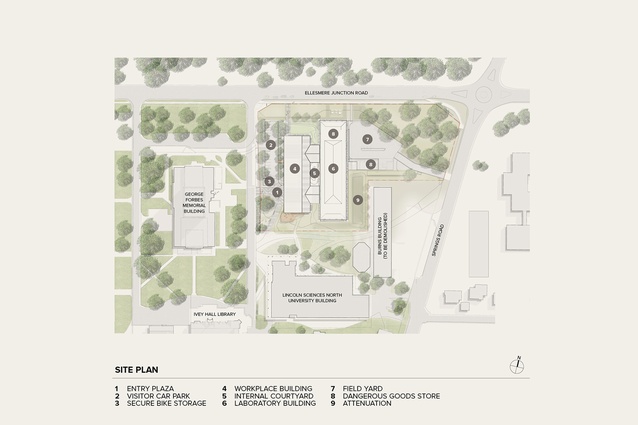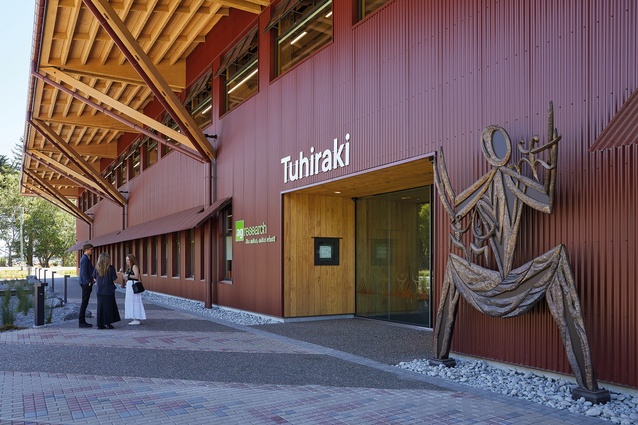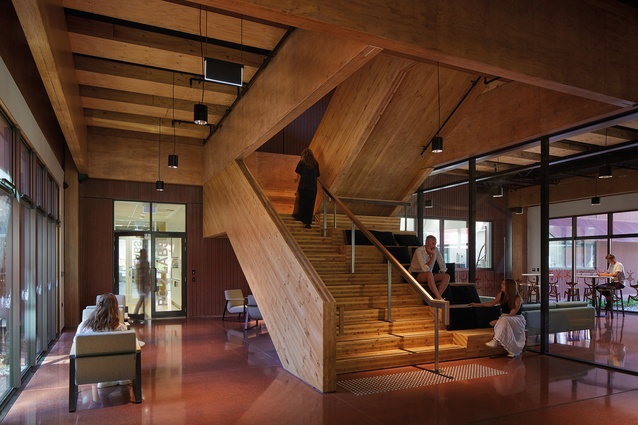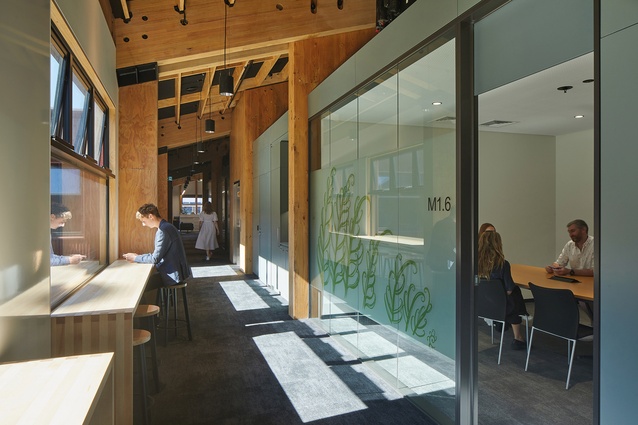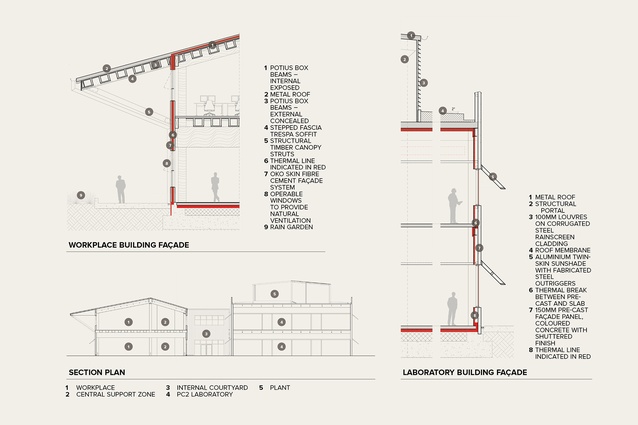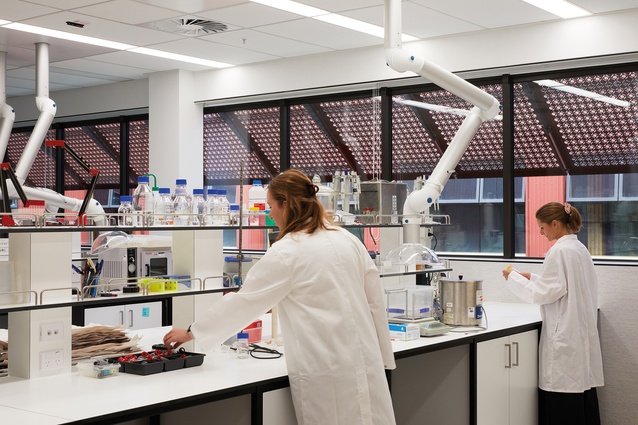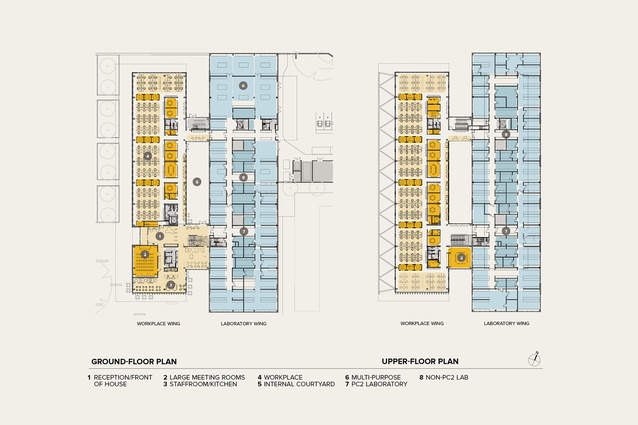Efficient, elegant sheds
Jasper van der Lingen investigates the collaborative, innovative and sustainable credentials of Tuhiraki, AgResearch’s new agri-science facility in Lincoln, designed by Architectus with Lab-works Architecture.
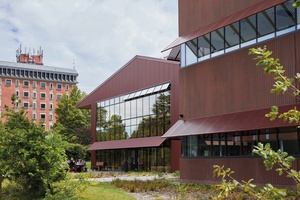
Post the 2011 Canterbury earthquakes, there was an ambitious plan to bring together various dispersed agricultural research facilities into a single building with the aim of integrating researchers from academia at Lincoln University with the Crown Research Institute, AgResearch. Through such a consolidation, it was hoped to supercharge progress and promote innovation and collaboration in this critical industry for the New Zealand economy. But, for various reasons, this was abandoned many years later as the subsequent government of the day rethought the role of Lincoln University and the project as a whole.
The hope of collaboration did not totally die, though. The larger project fragmented and became, instead of a single building, three separate buildings all placed close by — neighbours that can still visit and work together but not as a fully integrated group as was originally envisaged. The smaller of the three, Science South, was completed in 2021 and the larger two, Science North, now named Waimarie, and AgResearch, named Tuhiraki, were completed in 2023 on immediately adjacent sites on the front lawn of Lincoln University.
Agricultural research, in today’s world, has a large focus on environmental issues — searching for ways in which to improve agriculture and farming efficiently in an environmentally friendly manner. With the agricultural industry in the cross-hairs of the climate change movement, this work is particularly prescient.
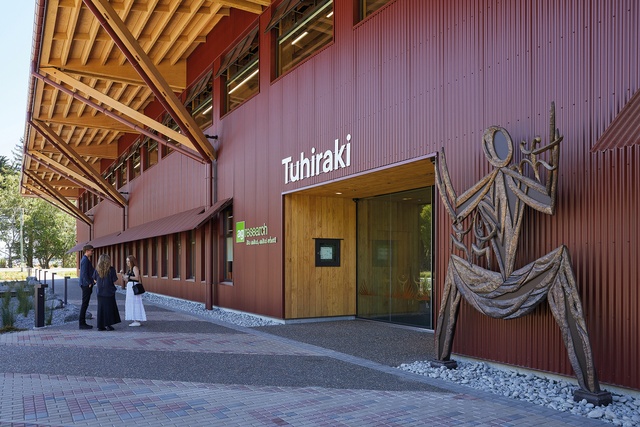
The new building for AgResearch, completed in 2023 and designed by Architectus, is a case of ‘walking the talk’ and demonstrating, in the very place where they work, a commitment to doing the right thing for the environment. With a rational, straightforward functional layout, the two-storey building is split into two parallel wings, one housing the offices and the other the laboratories, connected by two central links. The two halves are treated very differently.
The laboratory wing, with the fit-out designed by Lab-works Architecture, is a traditional concrete and steel structure with a red concrete pre-cast panel façade.
The workplace wing is the complete opposite — a timber structure composed of CLT, LVL and glulam, and Potius timber cassettes, which is clad on the exterior in profiled red metal sheets. The justification for this hybrid is pragmatic and reasonable and is expressed in a clear, straightforward and elegant manner, typical of the work of Architectus. The PC2 labs require containment after a seismic event and have low vibration standards, which are achieved without undue complexity with a standard steel and concrete structure. In addition, the heavy servicing needs of the laboratories, along with their weight and seismic restraint, are simply achieved with steel and concrete.
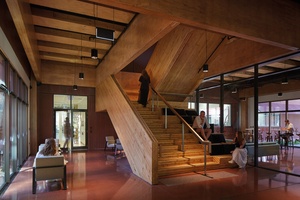
The workplace wing, though, with fewer constraints, was an opportunity for AgResearch to demonstrate its commitment to sustainability and provide a warm, handsome interior to attract and retain the very best staff. The timber structure is exposed wherever practical, and the soaring internal height gives an almost cathedral-like feel to the open-plan offices, providing a sense of occasion and dignity to the day-to-day tasks undertaken within. Natural cross-ventilation, using operable windows on actuators, has proven to be a success during its first typical Canterbury summer in use. Large overhangs and shade canopies over the west-facing windows mitigate heat gain from the most demanding part of the day and, to reinforce AgResearch’s support and close links to the New Zealand farming community further, wool carpet and insulation are employed throughout. The building, and particularly the west wing, is a great exemplar of how to build in today’s environmentally sensitive age and reflects the sustainability values of AgResearch in an authentic way in the very fabric of where they work. It is a place that is future-focused and committed to doing the right thing.
The building is located on a prominent site adjacent to the Lincoln University campus, situated on the corner of Ellesmere Junction Road and Springs Road. The patina of the red-oxide concrete panels speaks of the red brick prevalent throughout the campus as well as the traditional red barns that dot the countryside. This, plus the simple exposed timber structure inside, evokes the utilitarian shearing sheds and farm buildings of rural New Zealand. One could quibble about the placement of the large service yard facing the street corner; however, for a building in the round, with no obvious back, this location was the most pragmatic and is dealt with sensitively around some large existing trees.
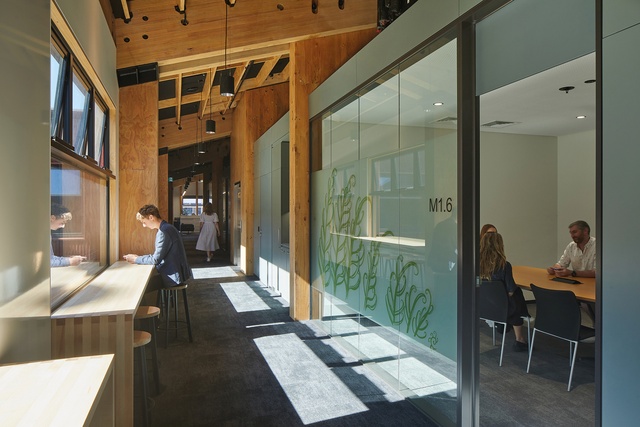
The other key driver of the design was to promote transparency and collaboration. Architectus has enabled, in the design, the ability to see between the labs and offices and to be aware of the many activities going on. This promotes a sense of a larger community, working together towards a common goal. It was a conscious move away from the more traditional separate offices and hermetic labs to an open-plan environment with shared circulation and views throughout to become a place that promotes teamwork, interaction and innovation.
Beyond the building itself, the aspiration of facilitating collaboration extends to the neighbouring Waimarie building, housing the labs and offices of Lincoln University. Large, full-height walls of glass face across the courtyard and space between, giving great visibility to the activities in each building. Tuhiraki has no public café, whereas Waimarie has one. This was intentional, to encourage those informal interactions between inhabitants of the two buildings that can occur over lunch and coffees. Overall, this desire for integration goes back to the original vision for the project and, although the earlier single building is now fragmented into various separate buildings, the architects have cleverly retained this larger aim to work together through simple, clear architectural moves.
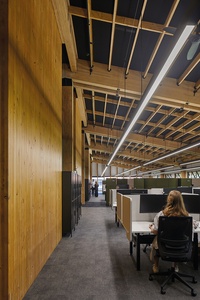
A deep recognition of the cultural importance of this significant building on a prominent site has been carefully worked through and is embodied in the very fabric displaying a respect and acknowledgment of the local iwi, the narratives of the region and its setting. A thorough process was followed and the partnership with the local iwi of Ngāi Tahu has enriched the meaning and significance of the facility, grounding it in its place and history. Based on the stories of the nearby Te Waihora (Lake Ellesmere), the building name Tuhiraki refers to the mountain (Mount Bossu) where Rākaihautū rested his kō (digging tool) after creating much of the land. The huge significance of Te Waihora is reflected in many ways throughout the building, from the sculpture of tuna (eels) in the main entry to the manifestations on the glazing, and from the wall treatments through to the landscaping and central courtyard space.
In this way, the rich poetic narratives that tell how the local whenua has come to be are now an essential part of the design: a welcome process that is becoming more and more common, and important, in the architecture of Aotearoa. Maybe the age-old discussions about what characterises New Zealand architecture are starting to come more into focus with buildings like Tuhiraki.
Tuhiraki is a building that looks to the future while simultaneously recognising the past. It both acknowledges that we need to look after our planet and demonstrates that in the way it is made, as well as respecting the context, particularly the rich cultural history of a place.


